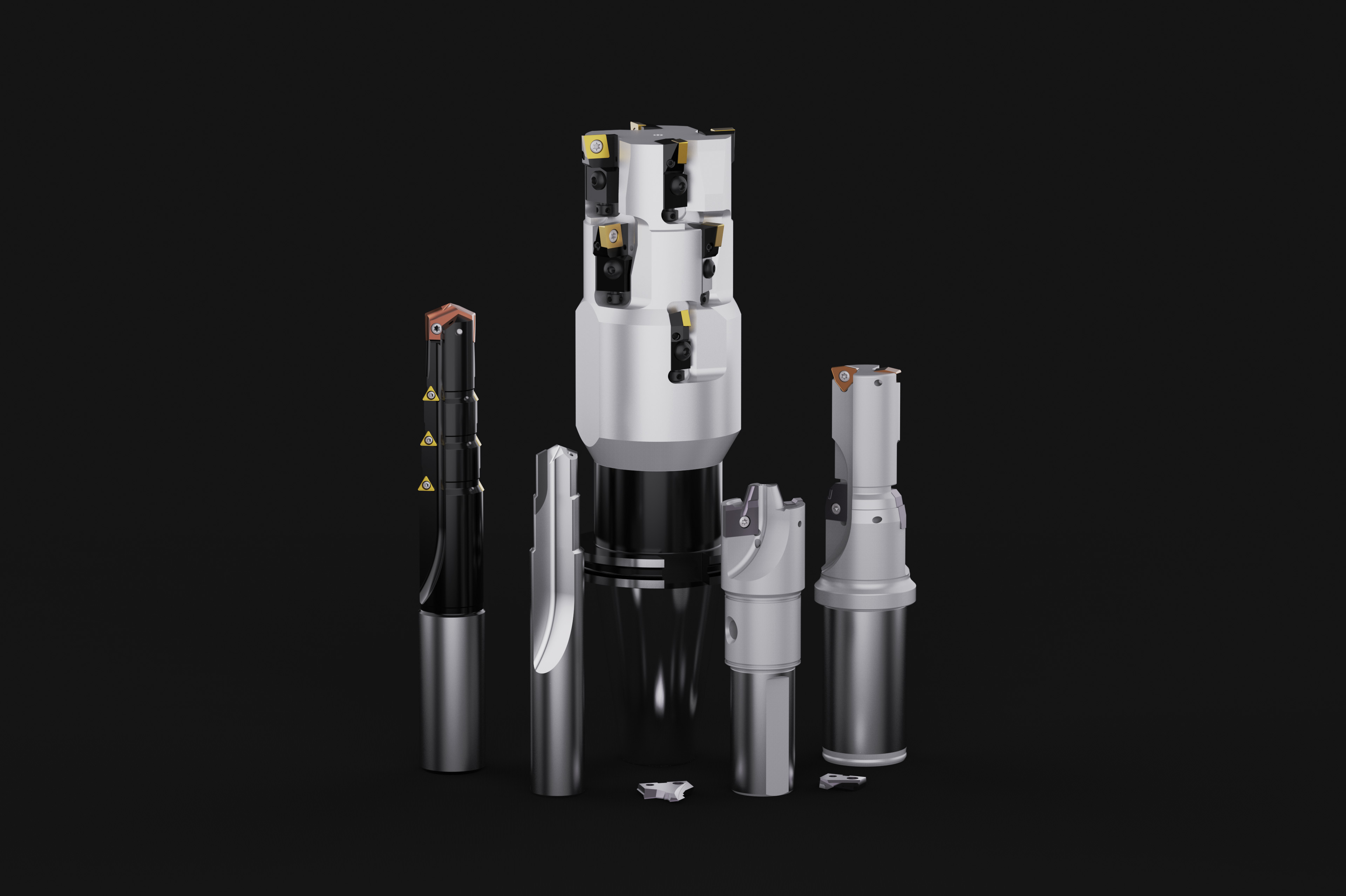Given how much of a part’s machining they can perform in a single setup, five-axis machining centers are natural choices for automated, unattended cells and systems. In conceiving these systems, much of the focus is placed on the robots or pallet changers moving the parts. However, part-handling automation is only one consideration when automating five-axis machining. Success in automating five-axis machining is in large part a factor of the machine tool itself, because the machine tool’s features maintain accuracy and repeatability throughout a long unattended run. Makino Applications Engineering Services Manager Michael Minton sat down with me to discuss the factors shops should consider when designing an automated five-axis machining cell.
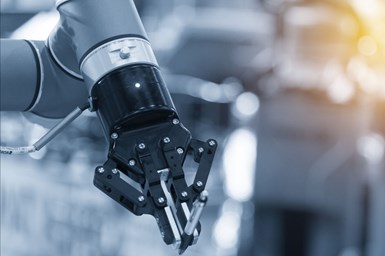
Five-axis machining centers are natural choices for automated cells, but the part-handling systems are only part of the story. Repeatability and precision are just as important, and those qualities are found in the machine tool itself.
Why Are You Automating?
To Minton it is vital that the shop consider its goals before investing in automation, including the machine tool for automation. Knowing how much unattended runtime is expected will have a major impact on the machine chosen. He says, “It’s important to consider what’s in a machine tool that’s going to maintain the part quality and precision that you need.”
Featured Content
Generally, the more a machine tool will be expected to run unattended, the more exacting the specifications for the machine. As Minton puts it, “You are looking for systems within the machine that maintain accuracy and stability, maximizing the time the spindle is available to produce.” This means looking for a machine tool with high rigidity and thermal stability, especially if the machine will run entirely through the night.
Materials Determine Tooling Solutions
Another major concern for a shop looking to automate its five-axis machines is the materials the machine will be cutting. Materials have a major impact on cutting tools, which in turn have a major impact on any unattended machining plan. A machine cutting aluminum or low-carbon steel, for example, will have better tool life and require fewer spare tools in the magazine than a machine cutting titanium or cobalt chrome alloys.
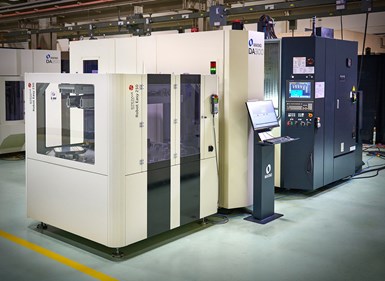
Five-axis machining centers like this DA 300 from Makino are capable of utilizing a wide range of automation systems.
“When you’re machining difficult materials and experiencing more intense wear, it is vital to have systems that can manage and track the tooling,” Minton says. This means solutions such as larger tool magazines for redundant tooling and in-process tool measurement are vital, but less common measures should be considered as well. Makino provides both tool life management and spindle load monitoring, in addition to these other functions. “This enables us to monitor the load on the tool within a threshold, and we can manage the tools, either by time in the cut or by the number of pieces so that the machine can change the tools prior to the end of their useful life,” Minton says.
Improving Repeatability and Accuracy Through Machine Design
But arguably the most important success factor is the design of the machine. Rigidity and geometric accuracy are especially important. According to Minton, “In a typical five-axis machine for unattended production, the table is carrying two rotating components. Having a machine with the proper rigidity will ensure that they’re properly supported and aligned to maintain geometric accuracy in a production environment.”
The stability of the machine tool provides a foundation for automation.
Additionally, a shop should not overlook the effects of thermal stability in lights-out machining. Throughout the time span of a long unattended run of parts, “One of the biggest factors we have to fight is the thermal conditions, both from the ambient temperature in the machine and the temperature of its moving components,” according to Minton. To illustrate machine design consideration for thermal stability, Minton pointed to the DA 300 from Makino, which uses internal cooling systems to prevent thermal distortion. “The machine uses active cooling systems in the spindle, the direct drive motors and the ball screws to maintain the temperatures of all those systems within plus-or-minus one degree centigrade, using the measured bed temperature as the baseline,” he says.

The DA 300 is a five-axis machine tool designed with automation in mind. Its rigidity and thermal stability enable it to cut parts for long, unattended runs while maintaining accuracy and part quality.
The same machine has an axis design that further emphasizes rigidity and geometric accuracy, a factor that helps makes it reliable for lights-out machining, according to Minton. “Additionally, the trunnion table is driven from one side by a direct drive motor and fully supported by a bearing carriage on the opposite side,” he says. “So we're minimizing deflection and maintaining the alignment of the rotary table to the X axis.”
Now Add Automation
The stability of the machine provides a foundation for automation. “Makino’s perspective and my personal perspective is that the function of the automation is to load and unload the machine tool,” Minton says. “For the automated system to be successful, all of the equipment that make up the automated machining systems are crucial to its overall success.” Whatever automation system is used, having a machine tool that is set up to ensure the accuracy of the part is critical.
RELATED CONTENT
-
Understanding Swiss-Type Machining
Once seen as a specialty machine tool, the CNC Swiss-type is increasingly being used in shops that are full of more conventional CNC machines. For the newcomer to Swiss-type machining, here is what the learning curve is like.
-
Understanding The Four Major Behavioral Styles
Companies today are expanding the role of teams in the workplace in an effort to empower employees and improve organizational effectiveness. The more we try to work as a team, the more important it becomes to recognize that people exhibit different behavioral styles.
-
8 Ways to Increase Productivity on the Manufacturing Floor
When it comes to machine shop productivity, continuous improvement depends on efficient employees, equipment and processes.










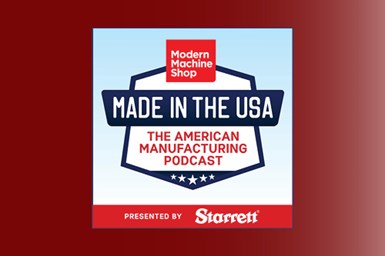
.1692800306885.png)
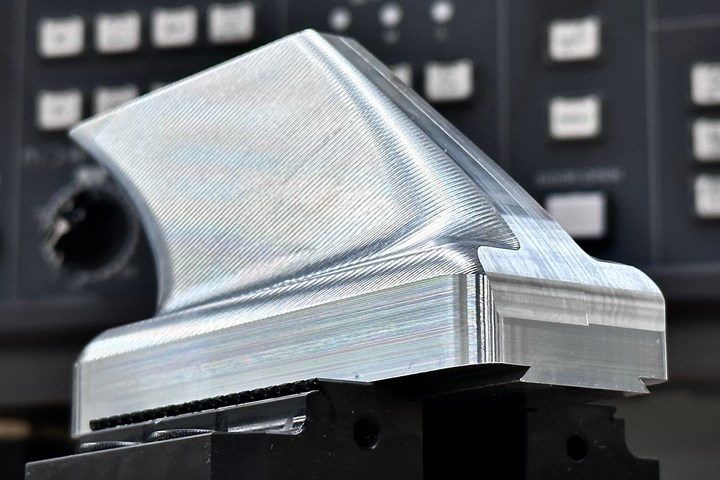
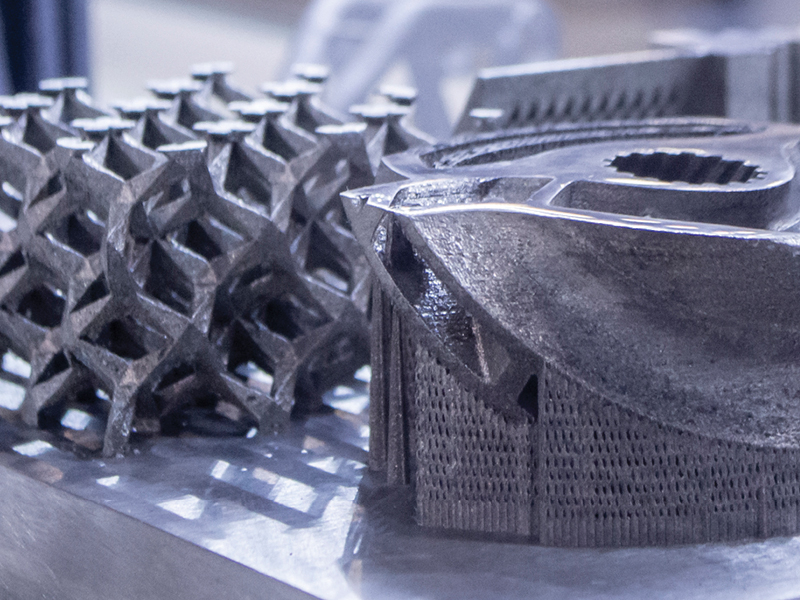
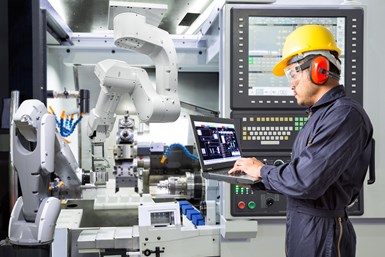

.1687801407690.png)
